UPSC Daily Current Affairs- 5th September 2023 | Current Affairs & Hindu Analysis: Daily, Weekly & Monthly PDF Download
GS-I
Zealandia
Subject: Geography
Why in News?
Geoscientists recently discovered a continent known as Zealandia that had been hiding in plain sight for almost 375 years.
About Zealandia:
- It is a long, narrow microcontinent that is mostly submerged in the South Pacific Ocean.
- Location: It is located in the southwestern Pacific Ocean, primarily to the east of Australia and to the south of New Caledonia. It encompasses the region that includes New Zealand and New Caledonia.
- Formation:
- Zealandia or Te Riu-a-Māui in the Māori language was formally one of the constituent continents of the ancient supercontinent called Gondwana, which also included Western Antarctica and Eastern Australia over 500 million years ago.
- It began to "pull away" from Gondwana roughly 105 million years ago.
- As Zealandia started pulling away, it began to sink beneath the waves, with over 94 per cent remaining underwater for millennia.
- It is approximately 1.89 million square miles (4.9 million square km) in size, about half the size of Australia.
- The vast majority of this new continent lies beneath 6,560 feet (2km) of water.
- The part of Zealandia that is above water forms the foundation of New Zealand's north and south islands as well as the island of New Caledonia.
- Tectonic Plate Boundaries: Zealandia is situated along the boundary of several tectonic plates, including the Australian Plate, Pacific Plate, and Indo-Australian Plate.
- The existence of Zealandia was first recorded in 1642 by Dutch businessman and sailor Abel Tasman, who was on a mission to find the "great Southern Continent," or Terra Australis.
Source: The Hindu
Gilbert Hill
Subject: Geography
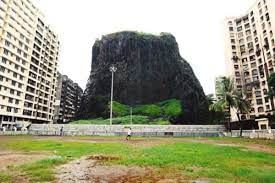
Why in News?
The Maharashtra Government recently proposed to develop Gilbert Hill into a tourist spot on the lines of Burj Khalifa in Dubai.
About Gilbert Hill:
- It is a 200-foot monolithic column of black basalt rock located at Andheri in Mumbai.
- The rock has a sheer vertical face and was formed when molten lava was squeezed out of the Earth's clefts during the Mesozoic Era about 66 million years ago.
- It was declared a National Park in 1952, while the Brihan Mumbai Municipal Corporation categorised it as a Grade II heritage structure in 2007.
- The 'hill' is only one of three outcrops of volcanic rock worldwide.
- Arguably the oldest heritage site in the country in its original form, Gilbert Hill has a few temples and a small garden atop. These are accessed by a steep staircase carved into the rock.
Key Facts about the Mesozoic Era:
- It is one of the major geologic eras in Earth's history, lasting approximately from 252 million years ago to 66 million years ago.
- It is also known as the "Age of Dinosaurs" because dinosaurs were the dominant land animals during this time.
- The Mesozoic Era was divided into three periods:
- Triassic Period (252 to 201 million years ago):
- The first dinosaurs appeared during this period, along with other reptiles, such as crocodiles and pterosaurs.
- The climate was warm and humid.
- Pangea, the supercontinent, began to break apart.
- Jurassic Period (201 to 145 million years ago):
- This was the golden age of dinosaurs, with many of the familiar dinosaur species, such as Tyrannosaurus rex, Stegosaurus, and Triceratops, appearing during this time.
- The first birds, like Archaeopteryx, emerged.
- The climate was still warm and humid.
- Cretaceous Period (145 to 66 million years ago):
- The dinosaurs reached their peak of diversity during this period.
- The climate became cooler and drier, and the continents continued to break apart.
- The period ended with the mass extinction event known as the Cretaceous-Paleogene (K-Pg) extinction, likely caused by a combination of factors. This event led to the extinction of the non-avian dinosaurs and many other species.
Source: Indian Express
GS-II
20th ASEAN-India Summit
Subject: International Relations
Why in News?
Prime Minister Narendra Modi will be on a two-day visit to Indonesia to attend the ASEAN-India Summit and East Asia Summit.
About 20th ASEAN-India Summit:-
- Host:
- Venue: Jakarta, Indonesia
- Significance: It will be the first Summit since the elevation of India-ASEAN relations to a Comprehensive Strategic Partnership last year. It will review the progress of India-ASEAN relations and chart the future direction of cooperation.
About East Asia Summit:-
- Etablished :2005
- First summit: Kuala Lumpur, Malaysia.
- Date: 14 December 2005.
- 18th summit: Jakarta, Indonesia.
- It is a forum of 18 regional leaders for strategic dialogue and cooperation on the key political, security, and economic challenges facing the Indo-Pacific region.
- This forum has an important role to play in advancing closer regional cooperation.
- The 18th East Asia Summit will provide an opportunity for leaders of ASEAN countries and its eight dialogue partners, including India, to exchange views on issues of regional and global significance.
Source: AIR
PM-DAKSH Yojana
Subject: Government Schemes'

Why in News?
During 2020-21 to 2022-23, a total of 107,156 beneficiaries have been trained under the PM-DAKSH Yojana.
PM-DAKSH Yojana:
- The Pradhan Mantri Dakshata Aur Kushalata Sampanna Hitgrahi (PM-DAKSH) Yojana is a Central Sector Scheme.
- It was launched during 2020-21.
- The main objective of the Scheme is to enhance the competency level of the target groups to make them employable both in self-employment and wage-employment for their socio-economic development.
- It is a National Action Plan for skilling marginalised persons covering SCs, OBCs, EBCs, DNTs, Sanitation workers and waste pickers.
- Target Group:
- Artisans- who may be able to improve their revenue generation capacities within their practising vocations;
- Women- who may be able to enter into self-employment and financially empower themselves without neglecting their domestic activities and
- Youth- who may acquire long-term training and specialisation in employable vocations and gain a better standing in the job market.
- The age criterion of the scheme is between 18-45 years, and the income criteria are no income limit for SCs, SafaiKaramcharis, including waste pickers and DNT.
- The annual family income should be below Rs.3 lakh for OBCs, and the EBCs (Economically Backward Classes) annual family income should be below Rs.1 lakh.
- Nodal Ministry: Ministry of Social Justice & Empowerment (MoSJ&E).
Source: PIB
National Mission for Clean Ganga (NMCG)
Subject: Government Schemes
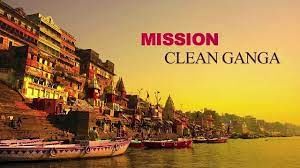
Why in News?
In the seven years, since the government unveiled its ambitious NMCG, it has installed treatment plants capable of treating just 20% of the sewage.
- These plants are capable of treating 20% of the sewage to be generated in the five major States that lie along the river– Uttarakhand, Uttar Pradesh, Bihar, Jharkhand and West Bengal.
- This is expected to increase to about 33% by 2024; and 60% by December 2026.
About National Mission for Clean Ganga (NMCG)
- It was registered as a society in 2011 under the Societies Registration Act 1860.
- It acted as the implementation arm of National Ganga River Basin Authority (NGRBA) which was constituted under the provisions of the Environment (Protection) Act (EPA),1986.
- NGRBA has since been dissolved with effect from 2016 consequent to the constitution of National Council for Rejuvenation, Protection and Management of River Ganga which is referred as National Ganga Council.
- National Ganga Council under the chairmanship of Prime Minister of India.
- NMCG has a two-tier management structure and comprises of:
- Governing Council
- Executive Committee
- Both are headed by Director General, NMCG.
Significance of Namami Gange programme:
- Creating sewage treatment capacity: 48 sewage management projects are under implementation and 98 sewage projects have been completed in the basin states.
- Biodiversity conservation: One of NMCG’s long-term visions for Ganga rejuvenation is to restore viable populations of all endemic and endangered biodiversity of the river, so that they occupy their full historical range and fulfil their role in maintaining the integrity of the Ganga River ecosystems.
- Creating river-front development: 68 Ghats/Crematoria projects for construction, modernization, and renovation of 267 Ghats/Crematoria and Kunds/Ponds have been initiated.
- River surface cleaning: River Surface cleaning for collection of floating solid waste from the surface of the ghats and river and its disposal are afoot and pushed into service at 11 locations.
- Afforestation: The process involves enhancement of productivity and diversity of the forests in head water areas and all along the river and its tributaries.
- Ganga gram: Ministry of Drinking Water and Sanitation identified 1674 Gram Panchayats situated on the bank of River Ganga in 5 States (Uttarakhand, Uttar Pradesh, Bihar, Jharkhand, West Bengal).
Challenges of the mission:
- Sludge control: While the containment of human waste has be largely achieved by Swachh Bharat Mission (SBM) through construction of toilet in Ganga grams, its safe disposal still poses a huge challenge.
- Faecal sludge is a bigger pollutant than sewerage.
- Sewage treatment: Despite initiatives, there are challenges like delay in new projects because of land acquisition and other procedural requirements, poor performance of Sewage treatment plants (STPs) and lack of sewerage network in cities.
- Industries find it easy to dispose their entire waste in the common drain which carries both domestic as well as industrial waste into the river.
- Restoring the flow: With enough flow, a river acts as self-purifying system. However, the Ganga fails this basic test except during monsoons.
- Due to restrictions and decrease in flow, the velocity of water decreases and siltation increases and the self-purification capacity decreases.
- Cost overruns: The costs of the programme have increased as a result of delays in multiple projects, and ineffective financial management.
- Governance Issues: The Ganga Action Plans lacked the coordination of various Ministries.
- Lack of coordination results in faulty execution, delays and cost overruns.
Way Forward:
Therefore, monetization of sludge and treated water is one of the focus areas of Namami Gange Programme under the banner of ‘Arth Ganga’, which means linking people with Ganga through a ‘Bridge of Economics’. A targeted dissemination of information must be done to bring about the desired change. There is a need to create a “generation with cleanliness conscious’ and everything else will automatically fall into place.
Source: The Hindu
GS-III
Why the Govt is Rushing an Alternative to Its Laptop Licensing Scheme
Subject: Economics
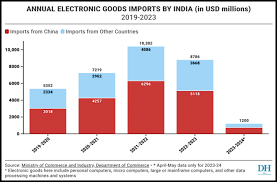
Why in News?
On 3rd August, the Union Government had imposed restrictions on import of laptops, tablets and similar electronic goods.
- This import restriction will come into effect from 1st November, 2023.
Background:
- On 3rd August, the Union Government imposed restrictions on import of laptops, tablets, all-in-one personal computers and ultra-small computers and servers with immediate effect.
- However, this decision was later suspended till 1st November, 2023.
- The Directorate General of Foreign Trade (DGFT) had to suspend the implementation as custom officials stationed at ports started holding up shipments of the specified electronic items.
- The issue has also come up in meetings between US and Indian officials after American companies including Apple, Dell, and HP urged the US government to ask Indian government to reconsider its policy.
Government’s Plan to Introduce Import Management System
- The Union government is conducting consultations on a new system through which it aims to monitor the sources from which IT hardware is being imported.
- Through a system known as “Import Management System”, the government will monitor the sources from which IT hardware is being imported.
- After the introduction of this system, finished IT hardware such as laptops, personal computers and servers can only be imported from “trusted geographies”.
- Beyond laptops, personal computers and servers, the directive could be applied on a large range of finished IT hardware equipment including 5G sensors, which are predominantly being imported from China.
- The Import Management System is currently in draft stage. Once finalised, it is expected to replace the licensing requirement.
- There is precedence to this idea of allowing imports only from trusted sources.
National Security Directive on Telecommunication Sector:
- In June 2021, the Central government launched the ‘trusted telecom portal’ and signaled the implementation of the National Security Directive on Telecommunication Sector (NSDTS).
- Under the directive, telecom companies are mandatorily required to connect in their networks only those new devices which are designated as “trusted products” from “trusted sources”.
- Post the 5G spectrum auction last year, operators like Reliance Jio and Bharti Airtel have signed agreements with companies like Ericsson and Samsung, excluding Chinese majors Huawei and ZTE.
Reasons Behind the Introduction of Import Management System:
- China Factor –
- Data released by the Ministry of Commerce and Industry gives us a broad picture of India’s dependence on China with regard to the import of electronic goods such as laptops, computers etc.
- Indeed, India’s imports of the aforementioned class of electronic goods have been steadily rising.
- Whereas in 2019-20, India’s imports of electronic goods stood at $5.3 billion, that figure climbed to $10.3 billion in 2021-22, before declining slightly to hit $8.7 billion in 2022-23.
- Given this fact, a rise in indigenous manufacturing would not only help India reduce its dependence on its diplomatic and business rival but would also help indigenous manufacturers expand their footprint globally.
- The introduction of Import Management System could force IT hardware companies to establish new supply chains, as China is unlikely to be classified as a trusted geography.
- Security Factor –
- Another factor behind the restrictions imposed on this class of electronic goods is concerns about ‘security’.
- The restrictions may have been brought in to guard against electronic hardware coming in with “in-built security loopholes that may potentially endanger sensitive personal and enterprise data”.
- Across the world, many red flags have been raised about cybersecurity with regard to Chinese-manufactured electronics.
Source: Indian Express
Nagarahole Tiger Reserve
Subject: Environment and Ecology
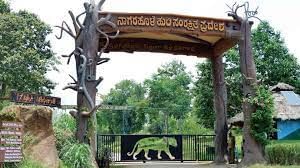
Why in News?
A 10-year-old boy was recently killed in a tiger attack in Metikuppe wildlife range in Nagarahole Tiger Reserve.
About Nagarahole Tiger Reserve:
- Location: It is situated in the districts of Mysore and Kodagu in Karnataka.
- The reserve is named after a small river, ‘Nagarahole’ (literally a snake stream in Kannada), which meanders within the habitat before joining the river Kabini.
- Boundaries: It is flanked by the Bandipur Tiger Reserve on its southeastern side and the Wayanad Wildlife Sanctuary of Kerala on the southwest.
- The habitat also forms part of the Nilgiri Biosphere Reserve.
- History:
- The origin of the reserve as a protected area dates back to the reign of the Wodeyar dynasty, the former rulers of the Kingdom of Mysore, when Nagarahole was an exclusive hunting reserve of the kings.
- It was set up in 1955 as a wildlife sanctuary by Coorg State.
- It was upgraded to a national park in 1988 and was brought under the fold of Project Tiger by declaring it as a Tiger Reserve in 1999.
- Vegetation:
- The forests of Nagarahole are primarily deciduous.
- The dry eastern limits of the reserve have dry deciduous forests.
- Towards the west, with the increase in rainfall, the vegetation changes to tropical moist and semi-evergreen forests.
- Flora:
- The forests are interspersed with swampy fallows called ‘hadlu’, which are dominated by grasses and sedges favoured by wild herbivores.
- Commercially important rosewood, teak, sandalwood, and silver oak are the main trees here.
- Fauna: Tiger, Leopard Asiatic, Wild Dog, Sloth Bear, Asiatic Elephant, Gaur, Sambar Chital Muntjac, Four Horned Antelope etc.
Source: The Hindu
Spamouflage
Subject: Science and Technology
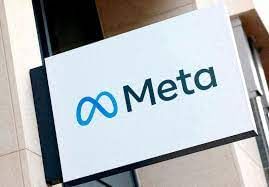
Why in News?
Meta recently, claimed that it is fighting a Chinese ‘Spamouflage‘ operation.
About Spamouflage:-
- It is an online Chinese spam operation.
- It pushes positive narratives about China and negative commentary about the United States, Western foreign policies, and critics of the Chinese government.
- Origin: China.
- Targets: Taiwan, the United States, Australia, Britain, Japan, and global Chinese-speaking audiences.
- It mimicked websites of mainstream news outlets in Europe and posted stories about Russia’s war on Ukraine and then spread it online.
- The accounts in the campaign have a tendency to intersperse political posts.
- It has been active on over 50 platforms and forums, including Facebook, Instagram, TikTok, YouTube, and X (formerly Twitter).
- Companies involved in the campaign were recently sanctioned by the European Union.
Source: Times of India
|
59 videos|5398 docs|1143 tests
|
















